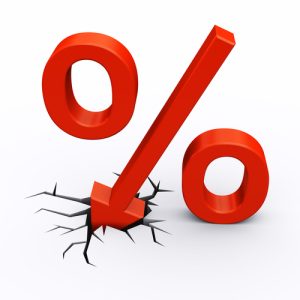S&P analysts have warned that reinsurers earnings are based partly on luck, supported heavily by benign catastrophe experience and significant prior-year reserve releases.
 Reinsurers have been able to maintain a thin margin of profitability levels in excess of cost of capital, but these are artificial returns buoyed up by reliance on reserves from past profitability and a gamble on continued benign catastrophe levels.
Reinsurers have been able to maintain a thin margin of profitability levels in excess of cost of capital, but these are artificial returns buoyed up by reliance on reserves from past profitability and a gamble on continued benign catastrophe levels.
S&P said “these excess returns are not sustainable, in our view,” adding that even under the simulated circumstances, “the margin above investors’ minimum return expectations is shrinking.”
And this ice-thin margin is expected to dwindle further, depending on natural catastrophe experience and rate of reserve release.
Despite these negative forecasts it’s unlikely investors will be turning away from the market anytime soon, as highlighted by S&P analysts, reinsurance still offers attractive returns that exceed most competing asset classes.
The reinsurance sector is expected to withstand the strain to its capital base in the near term, S&P believes issuer-specific rating actions are more likely than sector wide downgrades, however, “the shrinking excess returns (that is, returns in excess of cost of capital) on investors’ capital” add to the pressure facing the sector over the next 1-2 years.
While the challenges facing reinsurers are unlikely to let up in the near-term future, it’s clear from the levels of capital that continue to pour into the sector, that the industry is still potentially one of the safest options for investors, who remain attracted by uncorrelated returns opportunities.
The pressurised returns are driven by the successes of the industry’s investment offers, which continue to attract an influx of capital investors – S&P emphasised that they don’t expect lower returns to cause reinsurance equity investors to exit the sector.
“Given the low interest rates, investors remain hungry, even desperate, for yield. Therefore, as returns on reinsurance securities decline, investors will likely reassess their reinsurance investments, relative to potential returns available in other sectors” S&P explained.
Despite the slump on the industry’s returns, the 8.6% return on capital reported last year, is still one of the best rates going when compared with profits from investment in other sectors.
The average return on capital for major banks was 3.4%, the global industrials sector, which is generally lower rated, generated a 5.6% capital return in 2016, “approximately 300 bps below that of the higher-rated reinsurance sector.
“Returns on five-year risk-free assets (as measured by U.S. Treasuries) stood at a meagre 1.93% as at year-end 2016, declining to 1.89% as at June 30, 2017,” said S&P.
However, should investors withdraw their capital, “one consequence would be that reinsurance rates could harden as the excess capital in the reinsurance sector is reduced,” S&P explained.
The Chief Executive Officer (CEO) of Hong Kong domiciled reinsurer Peak Re, Franz Josef Hahn, commented in a Reinsurancene.ws interview at the RVS 2017, that the industry is well-used to riding the waves of a soft market; “positive strong pricing cycle doesn’t happen too often, or last long.”
Hahn said reinsurers “need to look for quality of portfolio” and selectively choose which lines of business to maintain and which to let go of, in an environment where market conditions are driving a process of natural selection that favours players who focus on innovation and efficiency.


